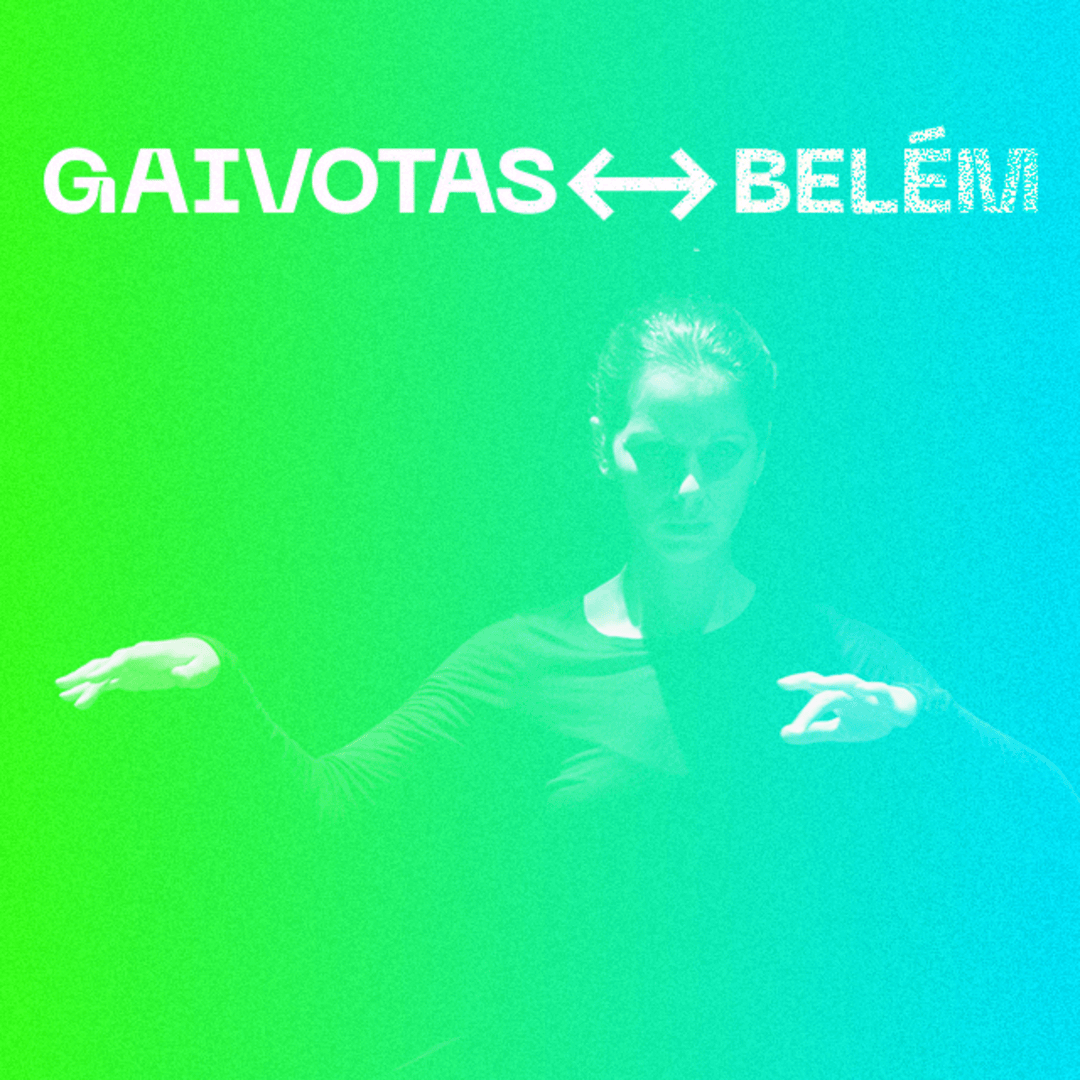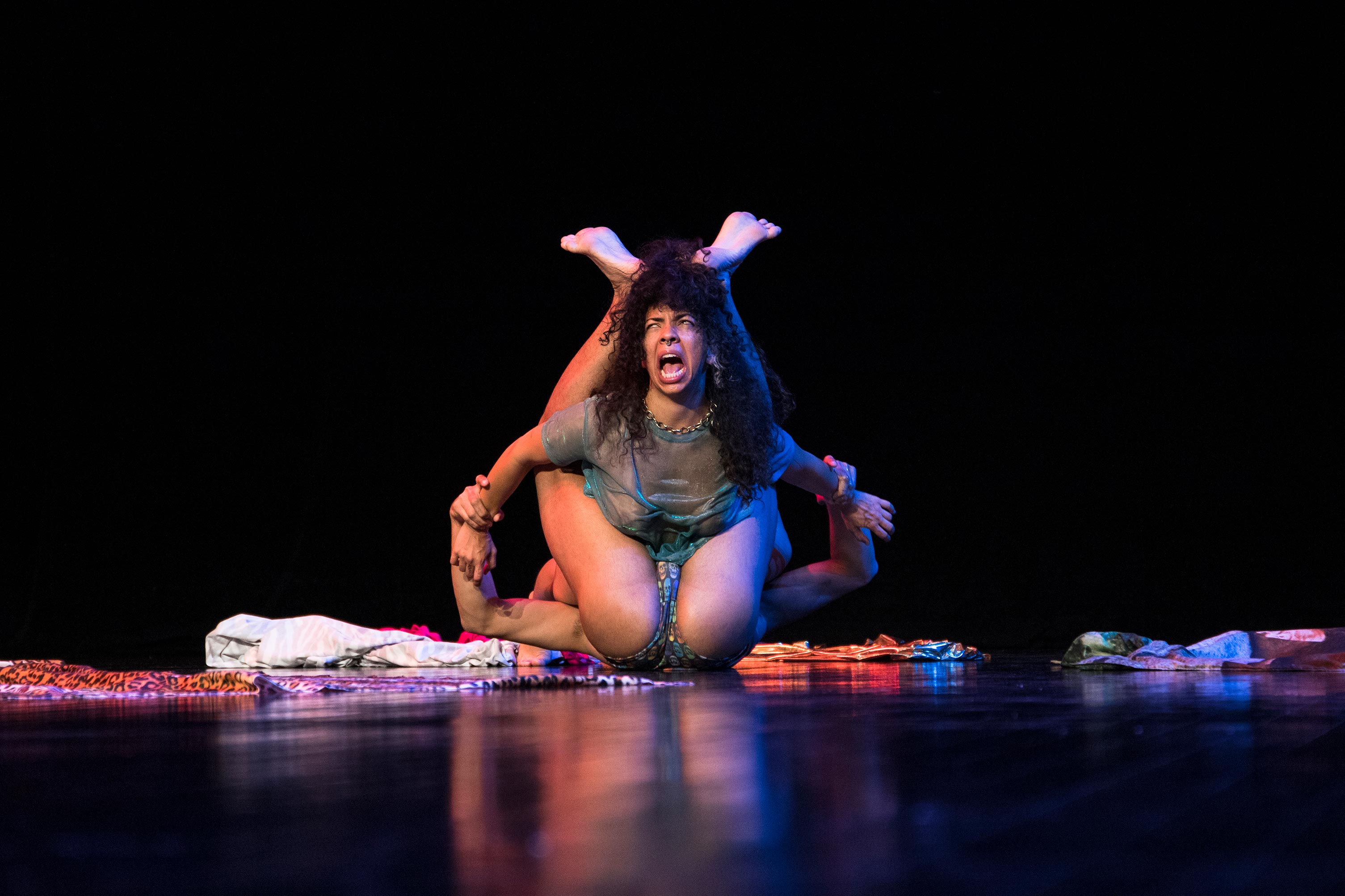Silvestre Correia, Luara Raio, Joãozinho da Costa & Bruna Carvalho
Gaivotas ↔ Belém (Festival)
-
Duration: 60min
Age-range: to be defined
: : : : : : : : :: : : : : : : : : : : : :
𝐓𝐈𝐂𝐊𝐄𝐓𝐒 𝐑𝐔𝐀 𝐃𝐀𝐒 𝐆𝐀𝐈𝐕𝐎𝐓𝐀𝐒 𝟔: 10€ • 7,50€
: : : : : : : : :: : : : : : : : : : : : :
𝐓𝐈𝐂𝐊𝐄𝐓𝐒 𝐂𝐂𝐁: 10€
: : : : : : : : :: : : : : : : : : : : : :
𝟏𝟑 𝐅𝐄𝐁, 𝐬𝐮𝐧: post-show talk
Booking: €
is a performing arts festival that will take place at Rua das Gaivotas 6 and at Centro Cultural de Belém, from March 8 to 13, 2022. It is the result of a joint effort between Teatro Praga, O Espaço do Tempo and Centro Cultural de Belém, in order to offer conditions and spaces of visibility and recognition to emerging artists from the Portuguese contemporary scene. This first edition, programmed and coordinated by Rui Horta and Pedro Barreiro, will feature premieres by Bruna Carvalho, Joãozinho da Costa, Luara Raio and Silvestre Correia. * On March 13th, Sunday, there will be a post-show talk, at CCB, about this first edition of the festival Gaivotas ↔ Belém tuesday & wednesday • 8pm JOÃOZINHO DA COSTA wednesday & thursday • 9pm BRUNA CARVALHO friday & saturday • 8pm SILVESTRE CORREIA sat & sunday • 7pm e 4pm LUARA LEARTH 

PROGRAMME
8-9.03
RUA DAS GAIVOTAS 6 | +12
FIDJO DI TCHON9-10.03
BLACK BOX CCB | +6
PENUMBRA11-12.03
RUA DAS GAIVOTAS 6 | +12
FILME12-13.03
BLACK BOX CCB | +18
APOCALYPSO
⇩ ⇩ ⇩ ⇩
JOÃOZINHO DA COSTA
FIDJO DI TCHON

Creation Joãozinho da Costa
Performers Luis Mucauro, Rolaisa Embaló, Joãozinho da Costa
Dramaturgy Madiu Furtado
Dramaturgy Support Rui Catalão
Artistic Support Giovanni Lourenço
Lights João Chicó
Production Gonçalo Rocha
Co-production ARTEPÓLON ASSOCIAÇÃO, Centro Cultural de Belém, O Espaço do Tempo & Rua das Gaivotas 6/ Teatro Praga, Câmara Municipal da Moita – CEA
Support Fundação Calouste Gulbenkian, Rua das Gaivotas 6, Self-Mistake
Critical of the conduct of societies in relation to the garbage they accumulate and the unconscious behavior of citizens, the play is built from the arrival in Bissau of a Guinean who lives in Europe. This character is returning to his home country after 18 years, eager to know and rediscover all the places. In a scenario that simulates the garbage scattered through the streets of Bandim, with clothes making up the accumulation, he appears to deliver his trash to a great childhood friend, since there are no bins. It is through this act, an attempt to clear himself of responsibility for the garbage that is piling up, that the story of the girl in the hat, a young woman who nurtures the dream of traveling to Portugal and finding happiness there, emerges. FIDJO DI TCHON invokes on stage the moving bodies that take the form of brushes and paint with their dances the blank canvases, having as a musical background Guinea-Bissauan melodies and projections of videos and images of the streets of Guinea-Bissau.
︿﹀︿﹀︿﹀︿﹀︿﹀︿﹀︿﹀︿﹀︿﹀︿﹀
︿﹀︿﹀︿﹀︿﹀︿﹀︿﹀︿﹀︿﹀︿﹀︿﹀
BRUNA CARVALHO
PENUMBRA

Creation and Performance Bruna Carvalho
Music Bruna Carvalho
Light Design Zeca Iglésias, Bruna Carvalho
Technical Direction Zeca Iglésias
Scenography Bruna Carvalho
Production Bruna Carvalho
Text advisors Rita Bernardes, Fernando Figueiredo
Images Zeca Iglésias, José Presumido
Video Rui Graça
Communication Eduardo Hall
Co-production Centro Cultural de Belém, O Espaço do Tempo & Rua das Gaivotas 6/ Teatro Praga
Support BLX-Biblioteca de Marvila, Centro de Experimentação Artística-Município da Moita, Devir-Capa, Eira, Fundação Centro Cultural de Belém, Forum Dança, Musibéria, O Espaço do Tempo, Rua das Gaivotas 6, Teatro do Noroeste-Centro Dramático de Viana
Penumbra is a solo composition that explores the crystallization of images on the plane of pure light and shadow. It questions what to construct from the impossibility of observing and listening to the body in its totality as an external element and how it is possible to work the potential of light in our perception of the world.
In a process of choreographic work, sound design and light design with no hierarchical relationship, light operates as a motto for figurative sequences, inscribing the movement of the body in a perennial relationship with the shadow, which proposes a joint poetics of that which is not defined or closed by nature, but is only figured or projected between light and shadow: Penumbra.
︿﹀︿﹀︿﹀︿﹀︿﹀︿﹀︿﹀︿﹀︿﹀︿﹀
︿﹀︿﹀︿﹀︿﹀︿﹀︿﹀︿﹀︿﹀︿﹀︿﹀
SILVESTRE CORREIA
FILME

Film seeks a meeting of theatrical and cinematic tools.
It is a performative act that duplicates itself and whose parts play with each other in a constant struggle for the uncertain. In Filme, we find a solitary chair and a (equally solitary) individual who observes what will dictate his future actions. A storm of images and sounds that will transport the spectator to a universe that once did not exist. A present in constant construction as it seeks to reach something unattainable: Beauty, a divine being that hides and shows itself little.
Creation Silvestre Correia
With Silvestre Correia
Assistance Carolina Dominguez
Special participation António Olaio
Video record Francisco Carvalho
Co-production Centro Cultural de Belém, O Espaço do Tempo & Rua das Gaivotas 6/ Teatro Praga, TAGV – Teatro Académico Gil Vicente
︿﹀︿﹀︿﹀︿﹀︿﹀︿﹀︿﹀︿﹀︿﹀︿﹀
︿﹀︿﹀︿﹀︿﹀︿﹀︿﹀︿﹀︿﹀︿﹀︿﹀
LUARA RAIO
APOCALYPSO

Here in this space where we are the walls soften. They are moist and begin to sweat a liquid full of pheromones that signal calm and pleasure to us. We also begin to perspire lightly, and our orifices become lubricated and relaxed. I put my index finger in my mouth, and with the saliva I collect I draw on the floor a crossroads. The wet trail begins to light up, while the inside of these paths darken. We are in the middle of the crossroads, and the four directions around us spiral, glide, explode, replicate.
We follow all the paths at the same time.
The word apocalypse comes from the Greek APO – to take away, and KALUMA – veil, literally meaning to UNVEIL. UNVEIL. TO SEE. We think of APOCALYPSO as a possibility to remove the veils that cover invisible constructions of the colonial world as a way to destroy it. This destruction appears in a sensitive crossroad that activates the body as a cartographic place of crossing, where performativity, spirituality, fiction and spell intersect and cloud its limits.
Apocalypso is a duo conceptualized and directed by Luara Raio, performed and co-created with Brazilian dancer and choreographer Acauã El Bandide Sereia. The set design is by the artist, performer, and set designer Anat Bosak, and the lighting is by performer and lighting designer Luisa Labatte. The creative process began in December 2021 at the ICI-CCN – International Choreographic Center of Montpellier in the context of the Master exerce.
Concept and dramaturgy Luara Raio
Choreography and performance Luara Raio e Acauã El Bandide Sereia
Scenography and costumes Luara Raio e Anat Bosak
Light design Luisa L’Abbate
Co-production Centro Cultural de Belém, O Espaço do Tempo & Rua das Gaivotas 6/ Teatro Praga
Artistic Residencies Honolulu Residency (Nantes, França), Criatório – Circolando (Porto, Portugal), ICI—CCN (Montpellier, Frana), Forum Dança (Lisboa, Portugal)
Support ICI—CCN, Circolando, Centro Cultural de Belém, Rua das Gaivotas 6, O Espaço do Tempo
Project financially supported by Portuguese Republic – Culture | DGARTES – Direcção Geral das Artes.
